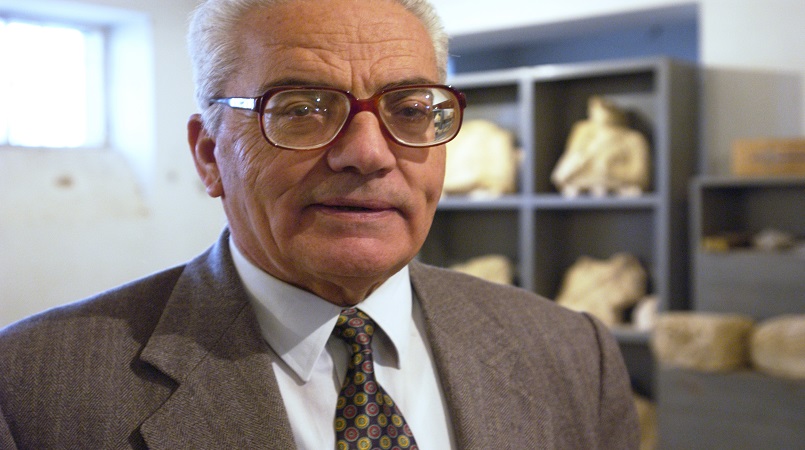
Syrian authorities believe they have found the body of a top archaeologist who was killed by the Islamic State (IS) group in 2015 while he tried to protect the ancient city of Palmyra.
Militants publicly beheaded Khaled al-Asaad, 82, after he refused to disclose the location of valuable artefacts.
State media reported that his body was thought to be among three discovered in Kahloul, east of Palmyra.
DNA tests will be carried out to confirm their identities.
The brutal murder was one of a series of atrocities committed by IS militants during the two periods they were in control of the Unesco World Heritage site.
Khaled al-Asaad devoted more than 50 years of his life to Palmyra, which is located at an oasis in the Syrian Desert north-east of Damascus.
The highly-regarded archaeologist retired as the site's head of antiquities in 2003, but he continued to carry out research there until it fell to IS.
Three of his sons and his son-in-law, who are also archaeologists, escaped to the capital with hundreds of valuable artefacts from the museum in the nearby modern town of Tadmor as the militants approached. But Asaad insisted that he would not leave his home.
"I am from Palmyra," he said, "and I will stay here even if they kill me."
Asaad was later detained by IS and interrogated about the locations of other artefacts that had been hidden. He was beheaded in a square in Tadmor that August after refusing to co-operate.
Activists circulated a photograph purportedly showing his body tied to a pole, with a placard beside it accusing him of being Palmyra's "director of idolatry".
Unesco's then-Director-General, Irina Bokova, said at the time that IS had killed Asaad "because he would not betray his deep commitment to Palmyra".
In the weeks that followed the murder, IS destroyed several iconic parts of Palmyra from the 1st and 2nd Centuries that it considered idolatrous.
The Temple of Baalshamin and the cella and surrounding columns of the Temple of Bel were blown up, as were the ancient city's triumphal arch and seven funerary towers at its necropolis.
After recapturing the site in late 2016, militants destroyed the tetrapylon - a group of four pillared structures - and part of the Roman Theatre.
Government forces have controlled the area since March 2017, but reconstruction work has been limited because of the ongoing civil war.
IS once held 88,000 sq km (34,000 sq miles) of territory stretching from western Syria to eastern Iraq and imposed its brutal rule on almost eight million people.
The group was driven from its last part of land in 2019, but the UN estimates that more than 10,000 militants remain active in Syria and Iraq.
They are believed to be organised in small cells and they continue to carry out deadly attacks in both countries.
